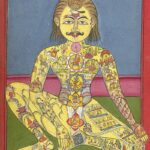Reflexivity as Occult Practice – I
In a recent essay, I posed the question – How do we learn to be magicians? Is it simply a matter of reading books, studying with a teacher, doing practices, and taking on particular beliefs and attitudes? My answer was to reflect on my early dive into the world of the occult in which I introduced the term reflexivity. In this post, I will discuss the concept of reflexivity and propose that it should be accepted as a core occult practice.
Continue reading »
